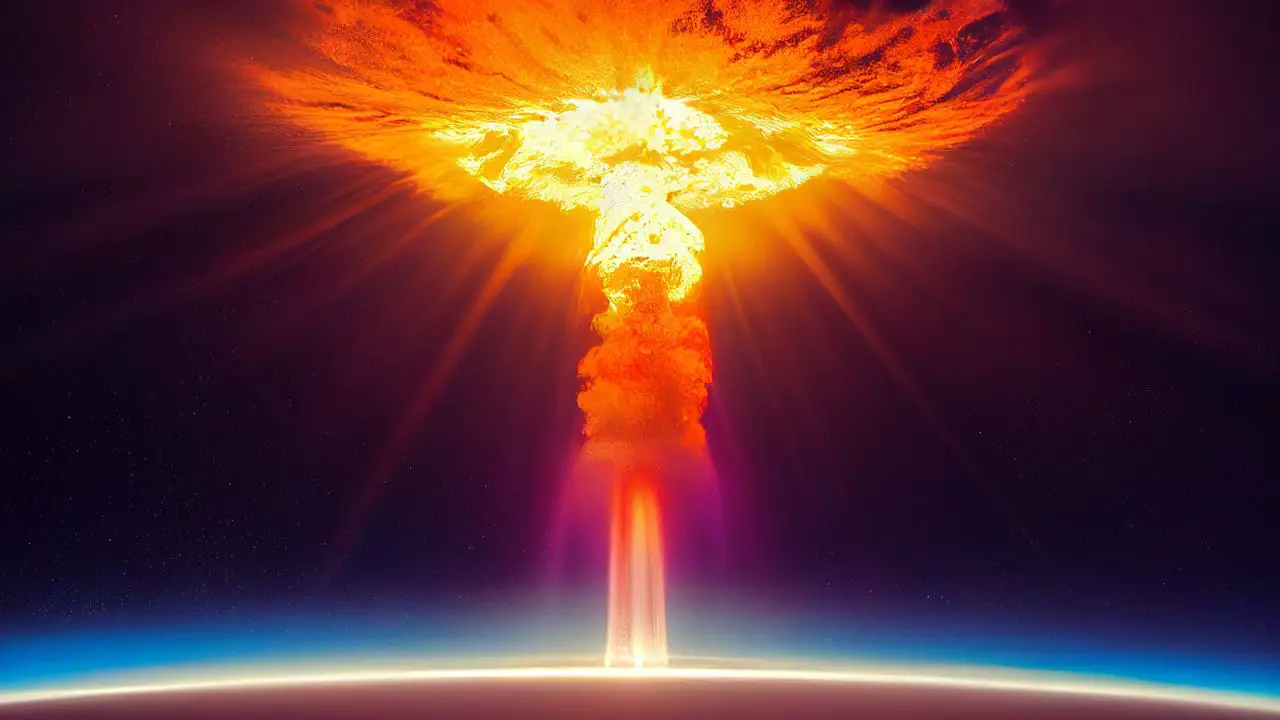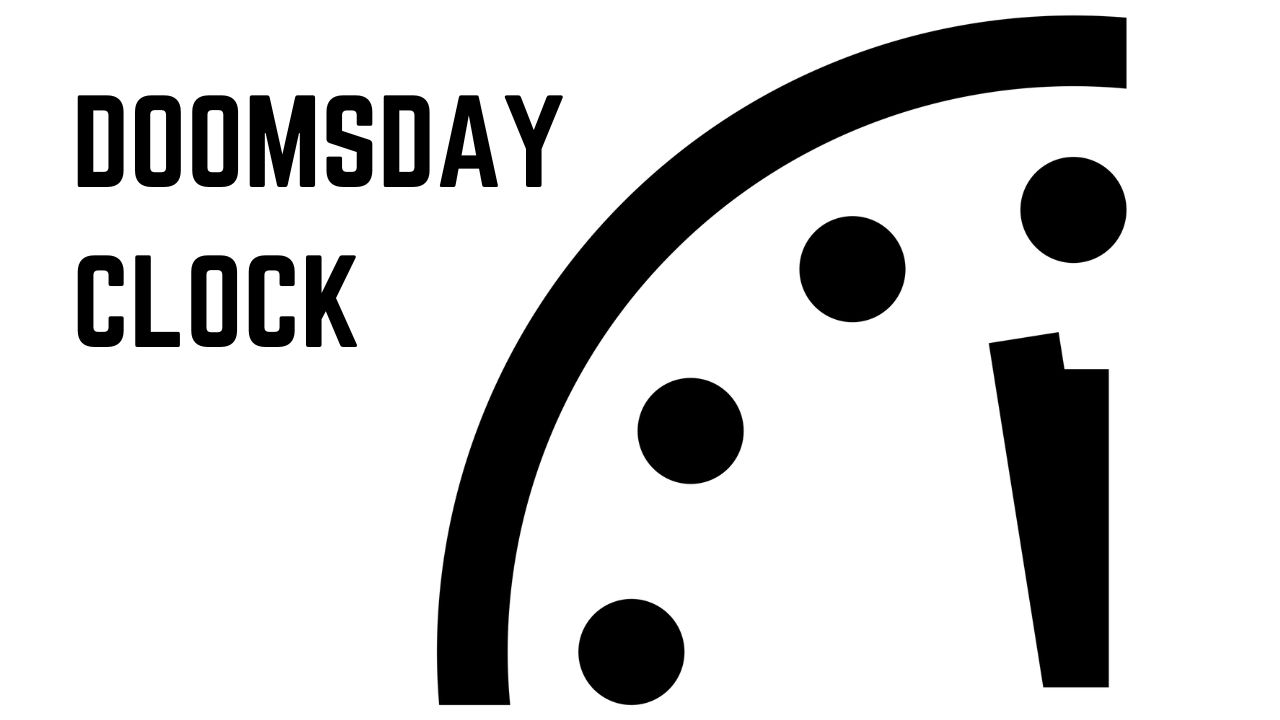The Doomsday Clock is a compelling symbol that represents the likelihood of a man-made global catastrophe. Created in 1947 by the Bulletin of the Atomic Scientists, it is not a physical clock but rather a metaphorical one.
The scientists behind this concept were part of the team that developed nuclear weapons, and their creation of the clock was driven by the urgent need to address the dangers posed by these and other technological advancements. The clock is set annually and reflects the global community’s proximity to apocalypse, symbolized by midnight. Factors influencing its setting include nuclear risk, climate change, and emerging technologies.
Over the years, the clock has become a universally recognized indicator of the world’s vulnerability, serving as a stark reminder of the potential consequences of human action and inaction. Its purpose extends beyond mere symbolism; it’s a call to global leaders and citizens alike to foster a safer, more stable world. Each adjustment of the clock’s hands is a commentary on current events and a reflection of how close we are to a point of no return, emphasizing the need for vigilant and proactive measures to safeguard our future.
What Happens When the Doomsday Clock Hits Midnight?
At its core, the Doomsday Clock is a symbol that shows how close we are to a global catastrophe, represented by ‘midnight’. It’s important to remember that this clock is metaphorical.
When its hands reach midnight, it doesn’t mean an immediate disaster will happen. Rather, it signals that we’re in a period of extreme danger, potentially on the brink of events that could alter our world drastically. This metaphorical midnight acts as an urgent call to awareness and action, pushing us to acknowledge and address the grave risks we face.
Possible Scenarios at Midnight
So, what could happen if the Doomsday Clock hits midnight?
- We’re looking at several alarming possibilities. A prominent one is the outbreak of nuclear warfare, which could have devastating effects across the globe.
- Another is the severe impact of climate change, bringing about extreme weather conditions and irreversible damage to our environment.
- We also can’t overlook the potential threats from advanced technologies and biological hazards, like a catastrophic pandemic.
The clock striking midnight symbolizes these dire possibilities, reminding us of the urgent need to work towards preventing them.
It has been Set at 90 seconds to midnight for the second consecutive year
The Doomsday Clock, a profound symbol showing how close we are to a man-made global catastrophe, remains set at 90 seconds to midnight for the second consecutive year. This setting, unchanged from the previous year, reflects the ongoing high-risk global situation, marked by several critical factors.
The Bulletin of the Atomic Scientists, which controls the clock, highlights the escalating tensions due to Russia’s large-scale invasion of Ukraine and the Israel Gaza War as a primary concern. These conflicts have elevated the threat of nuclear warfare, especially with Russia’s potential use of nuclear weapons and its suspension of participation in the New START treaty with the United States. Additionally, the introduction of tactical nuclear weapons in Belarus and changes in nuclear weapons test ban treaties further exacerbate these tensions.
Apart from nuclear threats, climate change continues to be a critical factor. The world experienced its hottest year on record in 2023, with rising greenhouse gas emissions, record-breaking sea-surface temperatures, and the lowest extent of Antarctic sea ice. Despite a significant increase in clean energy investments, the continued reliance on fossil fuels poses a substantial threat.
Moreover, advancements in artificial intelligence (AI) and developments in the life sciences are also concerning. The Bulletin warns that AI-enabled disinformation could hinder effective global responses to nuclear risks, pandemics, and climate change.
The Bulletin emphasizes the possibility of reversing the clock’s advance, but this requires serious dialogue and cooperative actions, particularly from major powers like the US, China, and Russia. Their unified efforts are crucial to pull the world back from the brink of catastrophe.
The clock, created in 1947 and first set at seven minutes to midnight, has varied over the years, reflecting the changing global landscape. Its closest approach to midnight was set at 90 seconds in 2023, largely due to the dangers posed by the conflict in Ukraine.
The Role of Humanity in Changing the Course
The approach of the Doomsday Clock to midnight is not just a doom-laden prophecy; it’s a reflection of our collective ability to influence the future. This crucial moment is a reminder that our choices and actions have a significant impact. It underscores the importance of cooperation and responsible decision-making on a global scale. By understanding these risks and joining hands to address them, we have the power to steer our world away from these threatening scenarios. It’s about realizing our potential to shape a more secure, sustainable future and taking concrete steps to make it happen.
In summary, the Doomsday Clock is a powerful metaphor that measures our proximity to self-inflicted global disasters. While the clock hitting midnight is a symbolic indicator of grave danger, it also represents a call to action for humanity. It emphasizes our collective power to prevent these catastrophic scenarios and is a stark reminder of the need for global unity and concerted effort in facing these challenges.




